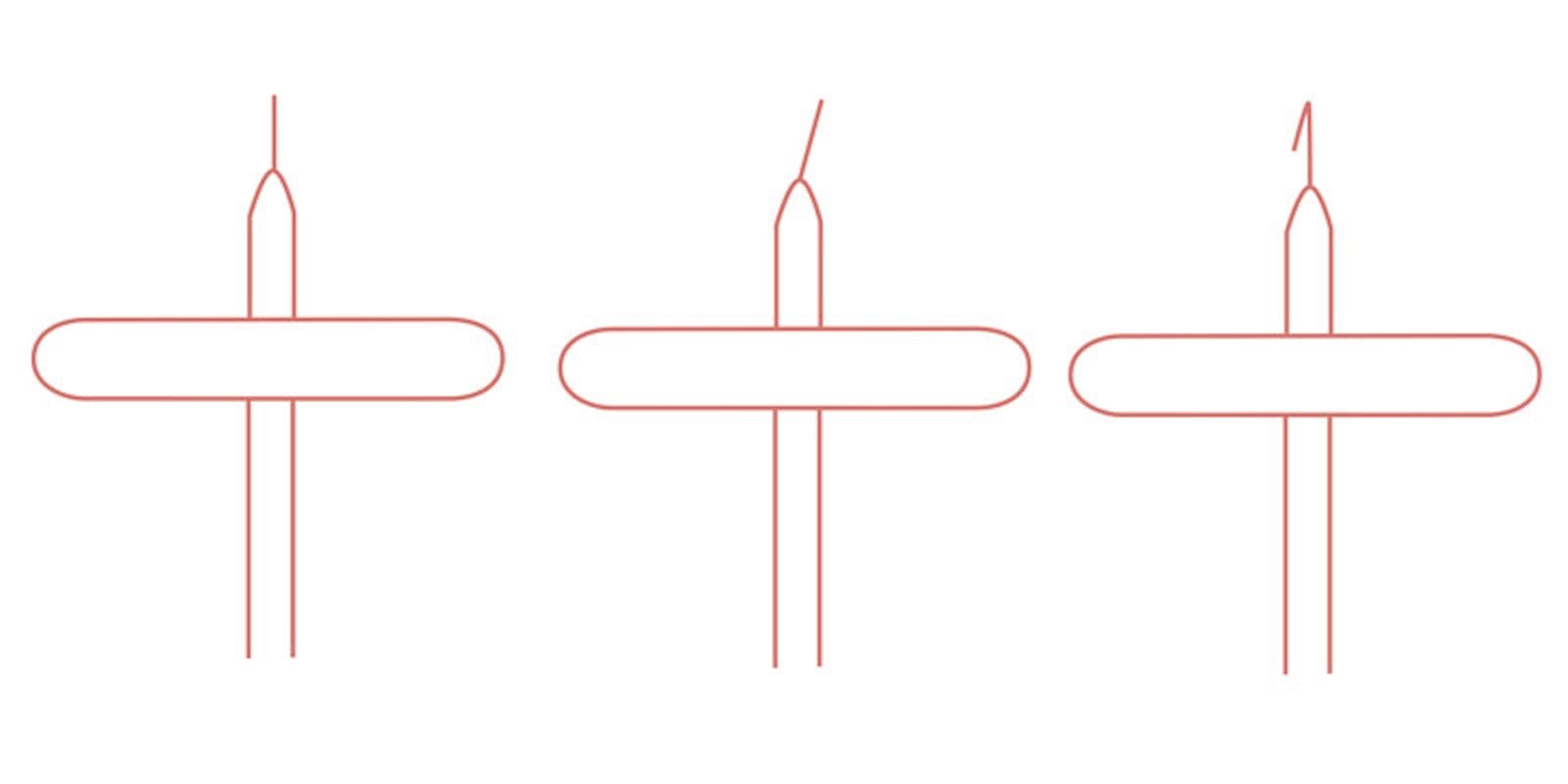I’m excited to start a new feature in honor of the new Interweave.com website. On most Tuesdays, we’ll share a tip, technique, or something inspiring related to spinning equipment. We’ll start with advice from master spindle and spinning tool maker Tom Golding of Golding Fiber Tools.
__
Spindle Hook Alignment
Simple Steps for Wobble-Free Spinning
_ By Tom Golding (excerpted from Spin Off_ Fall 2014)
Spinning on a drop spindle that wobbles can be annoying. The wobble, and resulting imbalance, may well be due to the spindle hook not being aligned properly. What follows is a quick two-step method for checking and aligning your spindle hook. Each step represents a plane of alignment. Round-nose pliers are the preferred tool for adjusting the hook, but you can also use needle-nose pliers with a soft cloth to protect the metal.
1. Look at the rear of your spindle hook. If the hook is properly aligned, you should see only a straight line continuous with the shaft. If the line is not straight, adjust the hook by pushing it sideways to the left or right with your fingers. If needed, use needle-nose pliers with a soft cloth to avoid marring the metal. Although not as critical, you may at this point check to see if the “beak” is tilted and needs straightening.
2a. Stationary Look at the side view of your spindle. Here are profile views of four common hook shapes.
From left, Swan’s Neck, Shepherd’s Crook, Dinner Bell, Cup Hook
_2b. Spinning _ To complete the process of alignment, you must observe the hook while it is spinning. Attach some fiber to the spindle, and spin it as swiftly as you can. Gaze at the hook while it is spinning. If properly aligned, the hook should look like one of these.
From left, Swan’s Neck, Shepherd’s Crook, Dinner Bell, Cup Hook
2c. Adjustment If you see "doubles," the hook is improperly aligned and needs further adjustment. Hold the spindle so you see the hook profile (at left). Using your fingers or needle-nose pliers with a soft cloth, push the hook forward or back as shown. Spin the spindle again, gaze at the hook, and recheck to see that the hook peak is uniform in appearance. The hook peak should not show doubles while spinning.
From left, Swan’s Neck: Too much space in the center. Push hook forward (pushing from the rear and moving it forward). Shepherd’s Crook: Too little space in the center. Push hook back (pushing from the front beak and moving it back). Dinner Bell: Too much space in the center. Push hook forward. Cup Hook: Too little space in the center. Push hook back.
Tom Golding is known for his creative and precision-balanced spindles, spinning wheels, and accessories. He is founder of Golding Fiber Tools along with his wife, Diane, and sons Seth and Obe. He lives and works on a fifty-nine-acre Icelandic sheep farm in Saxtons River, Vermont. Learn more at www.goldingfibertools.com.
—Anne Merrow




![From left, Swan’s Neck: Too much space in the center. Push hook forward (pushing from the rear and moving it forward). Shepherd’s Crook: Too little space in the center. Push hook back (pushing from the front beak and moving it back). Dinner Bell: Too much space in the center. Push hook forward. Cup Hook: Too little space in the center. Push hook back.]](https://longthreadmedia.nyc3.cdn.digitaloceanspaces.com/spinoff/spindle_hook_4-cropped-400x200.jpg)